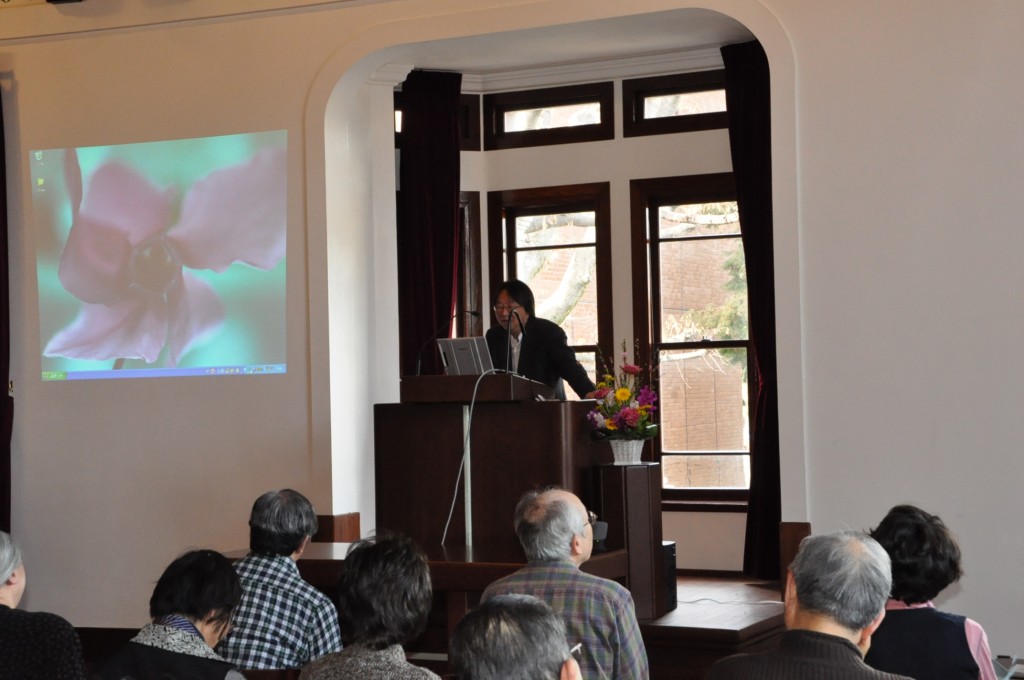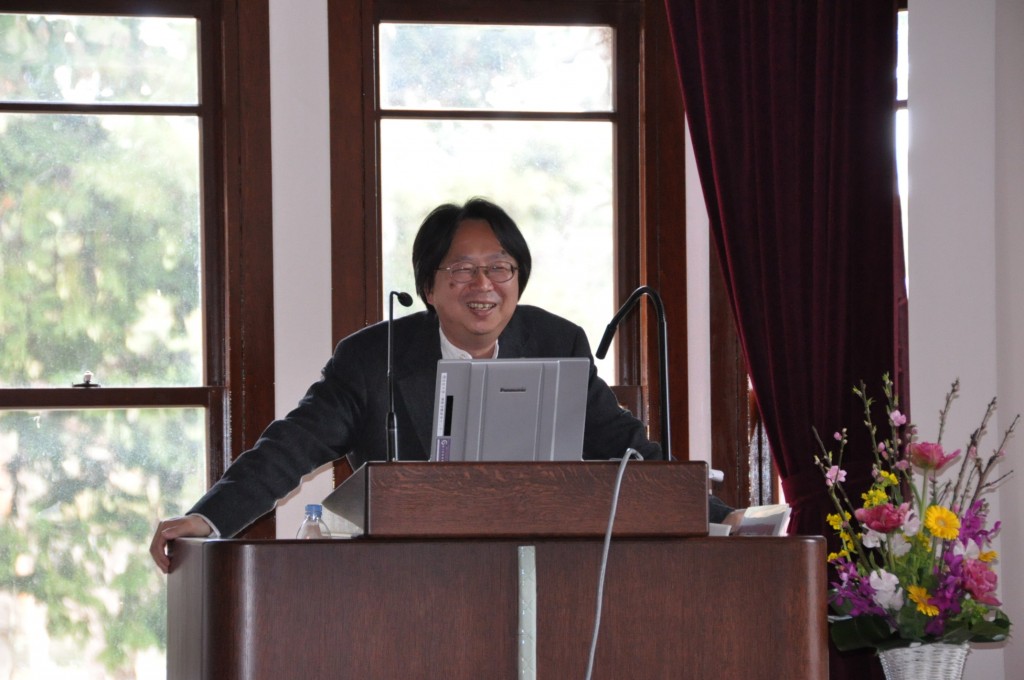Center for Interdisciplinary Study of Monotheistic Religions(CISMOR)Doshisha University
> Public Lectures > Anthropological Linguistic Approach to Islamic Sound-culture as Reflected in the Holy Qur’an (Koran)Public Lectures
Public Lecture with The Society of Near Eastern Studies in Japan
Anthropological Linguistic Approach to Islamic Sound-culture as Reflected in the Holy Qur’an (Koran)
| Date: |
2010/02/27 13:00 - 15:00 |
|---|---|
| Place: | Clarke Memorial Hall Chapel, Doshisha University |
| Lecture: | Tetsuo NISHIO, Professor, National Museum of Ethnology |
| Summary: | |
|
The Islamic world, especially the Arabic countries, boasts one of the richest musical traditions on Earth. For example, Belly dance, which is popular also among Japanese people, has so much importance as a tourist resource that it is often called the “fourth pyramid” in Egypt. At the same time, however, music and song is seen as something loathsome by Muslims for religious reasons. (An extreme example is the attitude of the former Taliban government in Afghanistan. It should also be noted that the social status of belly dancers is not high.) Then, what makes Muslims loathe music? Professor Tetsuo Nishio, in this lecture, addressed this question through his analysis of the “sound culture” in the context of the Islamic world and Qur’an. By “sound,” he means a comprehensive concept covering a wide range of sounds that surround us, including languages, while the study of the “sound culture” aims to shed light on how these sounds are used for human communication. Seen from the perspective of “sound culture,” the Qur’an, the Holy Scripture of Islam, has two important properties. First, the Qur’an was originally designed to be recited aloud and passed down from generation to generation orally. (The term “Qur’an” is derived from an ancient Arabic word meaning “to recite” and a Hebrew word “to shout.” Probably, it originates from the Syriac language.) The Qur’an is read according to a set of rules called Tajweed, and the melodious recitation of the Qur’an is called “Tilawat,” which has seven styles. The Qur’an, recited with a melody and intonation that differ from reader to reader, can sound “musically” beautiful. While the Islamic laws do not allow the Qur’an to be recited with melody, its rhymed text, when read rhythmically and melodiously, sounds like “music” to our ears, though, of course, it is not music itself. Like the recitation of the Qur’an, the adhaan (the recitation of faith), the mosque’s call to prayer, is also highly “musical.” Second, in Islam, the translation of the Qur’an into languages other than Arabic has been prohibited (the translated texts of the Qur’an are regarded as “commentaries”), and no one other than ulamas (Islamic scholars) is allowed to interpret the Qur’an on his own. In the middle of the 7th century, the text of the Qur’an was standardized by Uthman, the third caliph of Islam (the standardized text is called “Uthman’s Version”), in order to eliminate the regional disparity in the text that had been widening with the geographical spread of Islam. This means that the Qur’an, though originally based on oral recitation and tradition, was recorded in “writing” already by the middle of the 7th century. The written text of the Qur’an, however, had been used only as a reminder for a long period of time to help people pass down the Qur’an orally. These two properties of the Qur’an give us some important insights. First, by the recitation of the Qur’an, Muslim leaders make effective use of the advantage of “music,” especially songs, though pretending to loathe music on the surface. Songs have the power to strengthen the sense of togetherness and relationships among members of a community (the grooming effect). Additionally, songs are a very useful tool to help community members share traditions and legends that have been passed down as true stories in the community. Recitation of the Qur’an has the same effect as song. At the same time, however, the Qur’an is a religious text that should not be subject to arbitrary interpretation, such as that for popular songs and novels. For this reason, Islam has prevented the stretching of the meaning of the Qur’an by prohibiting its translation in languages other than Arabic and by allowing only ulamas to interpret it (the gates of Ijtihad were closed). To build up an ummah (Muslim community), Islam, as a world religion, had to unite different ethnic and religious groups. For this purpose, perhaps, Muslim leaders have made practical use of music while officially prohibiting music. They are fully aware and therefore afraid of the power of “music,” and thus, they have to outwardly loathe it. This is the conclusion presented by Professor Nishio, who also noted that his view could be entirely incompatible with the contention of ulamas. Professor Nishio also raised questions that can concern not only the Qur’an but also all the other religious scriptures—he questioned whether the ulamas, who are exclusively entitled to interpret the Qur’an, are always sincere in their efforts, and pointed out the possibility that the “exclusivity” that characterizes music along with universality has been behind some of the problems we face today (by “exclusivity” of music, he means that music can connect people but it can also alienate people, e.g., by excluding those who do not join in song). During the lecture, Professor Nishio played tapes of the recitation of the Qur’an and adhaan, and a song produced by the Malaysian government to encourage faith among young people, sung by a popular singer, which made the lecture both melodic and more interesting. Tadashi Nakatani (Research Fellow, CISMOR, Doshisha University) |
|
|
*This lecture is given in Japanese. *Admission Free, No reservation necessary *Inquiry: 075-251-3972 (CISMOR) |
|
|
Program(Japanese) |
|

